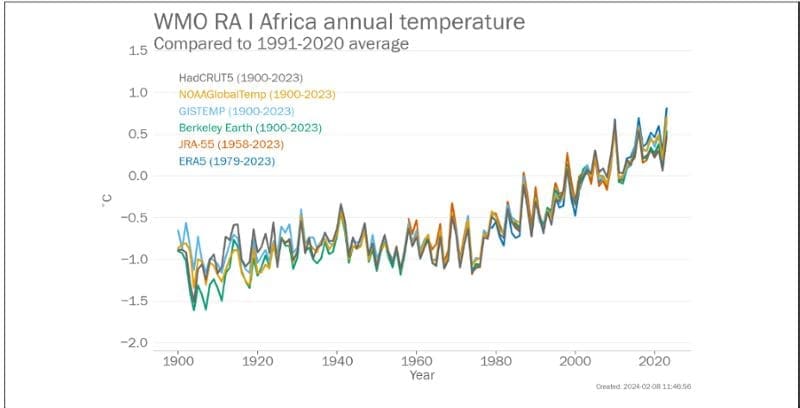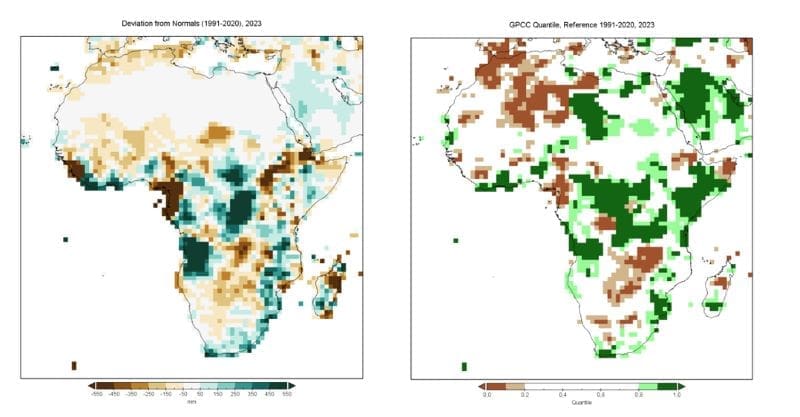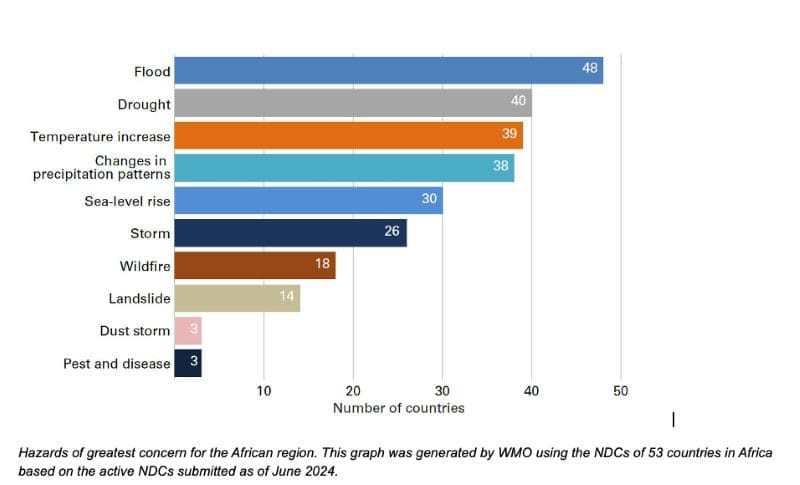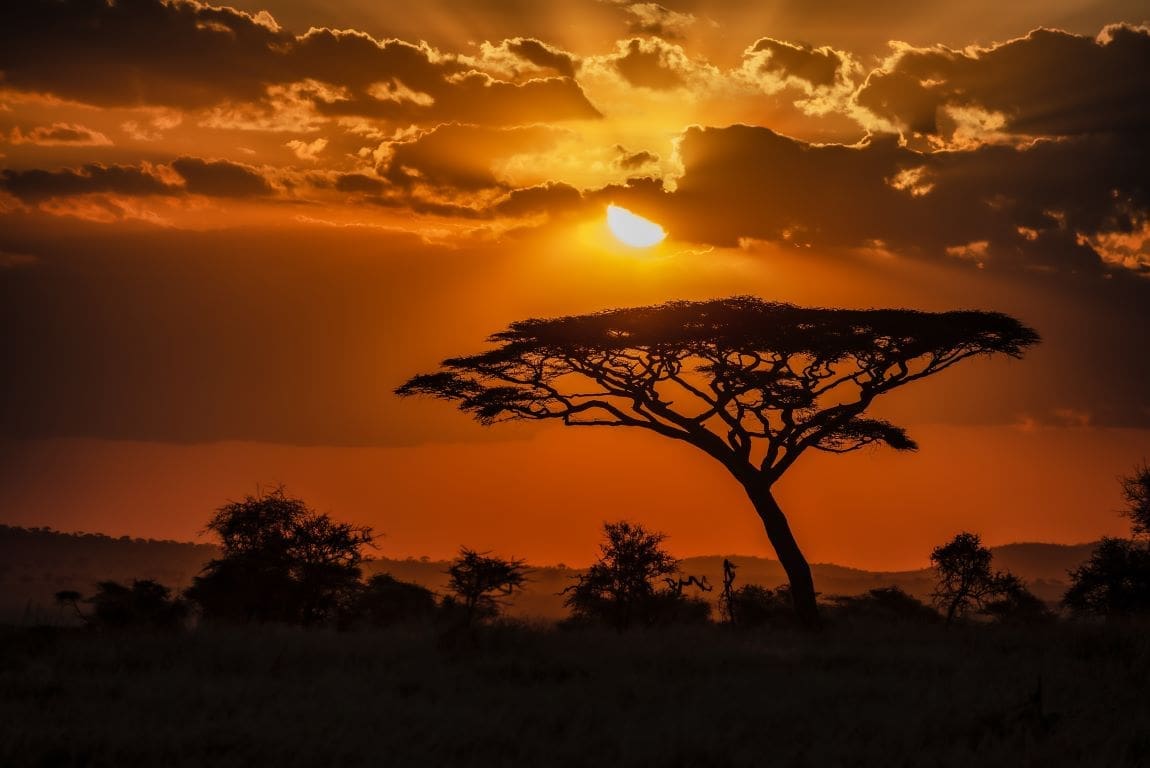Africa is grappling with a growing climate crisis, enduring severe impacts and shouldering disproportionate costs for necessary adaptation measures. According to a recent World Meteorological Organization (WMO) report, African countries are experiencing temperature increases slightly above the global average, along with extreme weather events that are becoming more frequent and intense.
The WMO’s State of the Climate in Africa 2023 report highlights the continent’s vulnerability, with countries losing 2-5% of their gross domestic product (GDP) and diverting up to 9% of their budgets to respond to climate extremes. In sub-Saharan Africa alone, the cost of adaptation is estimated to range between US$30-50 billion annually over the next decade, equivalent to 2-3% of the region’s GDP.
The report warns that by 2030, up to 118 million extremely poor people in Africa, those living on less than US$1.90 per day, could be exposed to worsening droughts, floods, and extreme heat if sufficient response measures are not implemented. This would significantly hinder poverty alleviation efforts and development across the continent.

In 2023, Africa faced one of its top three warmest years on record, with a mean temperature 0.61°C higher than the 1991-2020 average and 1.23°C above the 1961-1990 baseline. Northern Africa experienced the most rapid warming, with temperatures rising by approximately +0.4°C per decade between 1991 and 2023. Countries like Morocco, Tunisia, and Uganda recorded their hottest year, with Tunisia’s capital, Tunis, reaching a record 49.0°C and Agadir, Morocco reached a new maximum temperature of 50.4°C.
The continent also suffered from significant climate events, including multi-year droughts in the Horn of Africa and northwestern regions, extreme flooding in East Africa, and devastating tropical cyclones. For instance, flooding caused by Mediterranean cyclone ‘Storm Daniel’ in Libya resulted in at least 4,700 confirmed deaths, with thousands still missing.

These extreme weather events have had catastrophic impacts on agriculture and food security. In North Africa, cereal production was 10% below the five-year average due to persistent droughts, with Tunisia being the worst affected. In sub-Saharan Africa, erratic rainfall and insecurity led to below-average cereal production in Sudan, South Sudan, and parts of Uganda and Ethiopia.

To address these challenges, the WMO report emphasizes the urgent need for increased investment in National Meteorological and Hydrological Services (NMHSs) across Africa. Strengthening these services, along with the implementation of the Early Warnings For All initiative, is crucial to mitigate risks, build adaptive capacity, and guide sustainable development strategies.
The Early Warnings for All Action Plan for Africa, launched in September 2023, aims to ensure that accurate information about natural hazards reaches all segments of society, particularly the most vulnerable. Currently, only 40% of the African population has access to early warning systems, the lowest rate of any region globally. The plan seeks to increase this coverage and enhance the continent’s resilience to climate impacts.
As climate change continues to escalate, Africa’s disproportionate burden underscores the critical need for global and regional efforts to enhance adaptation and resilience on the continent. The report has been officially released at the 12th Climate Change for Development in Africa (CCDA) Conference in Abidjan, Cote d’Ivoire, highlighting the urgent actions required to protect lives and economies from the worsening climate crisis.
Source: World Meteorological Organization (WMO)
Featured image credit: wirestock | Freepik




